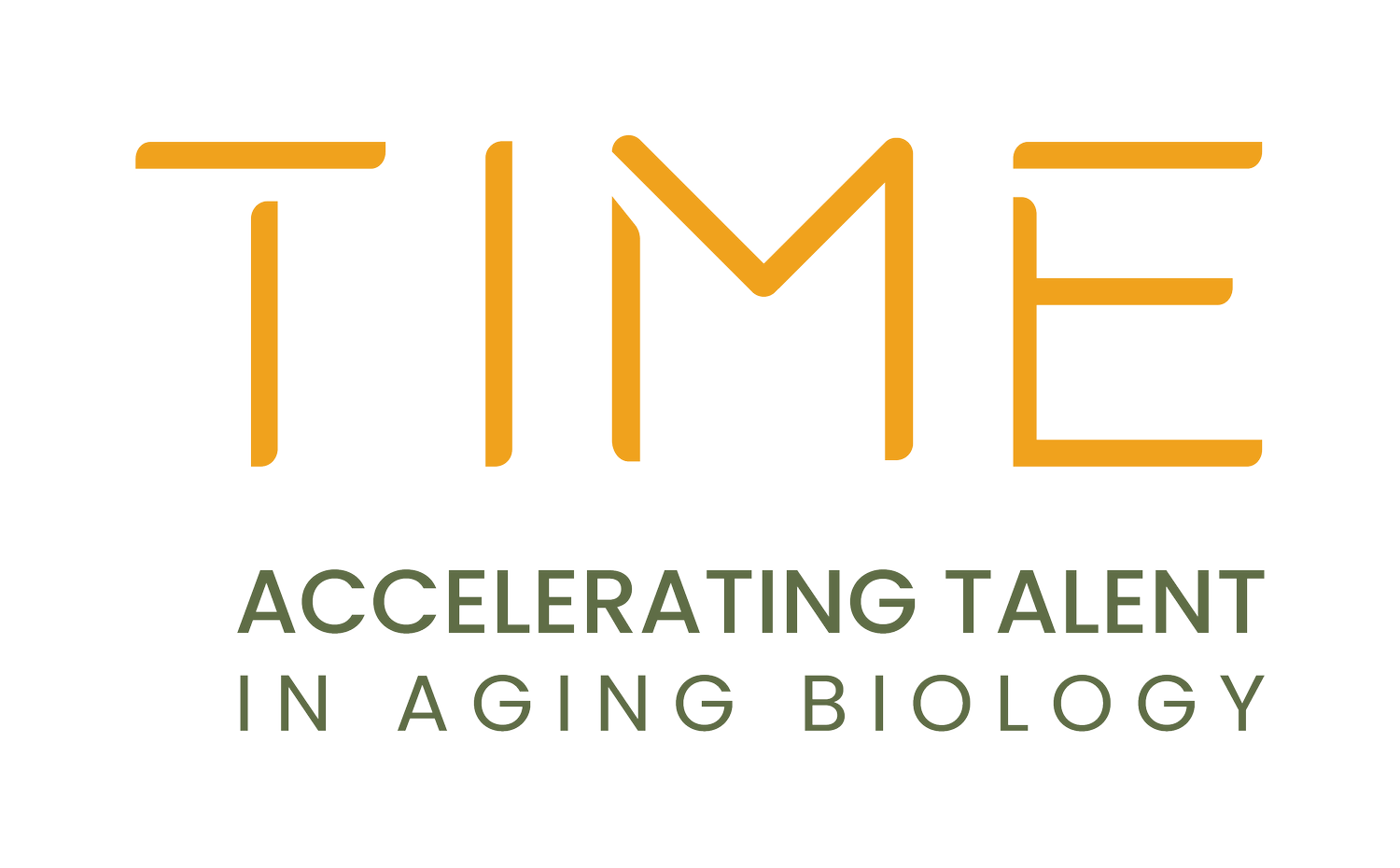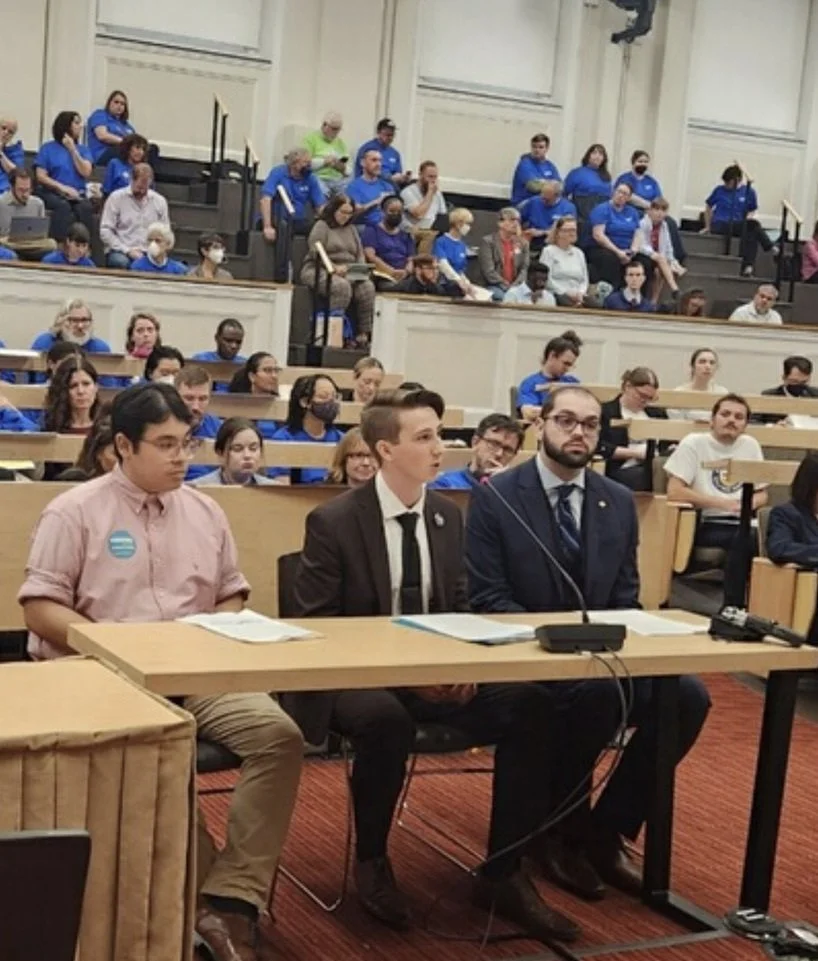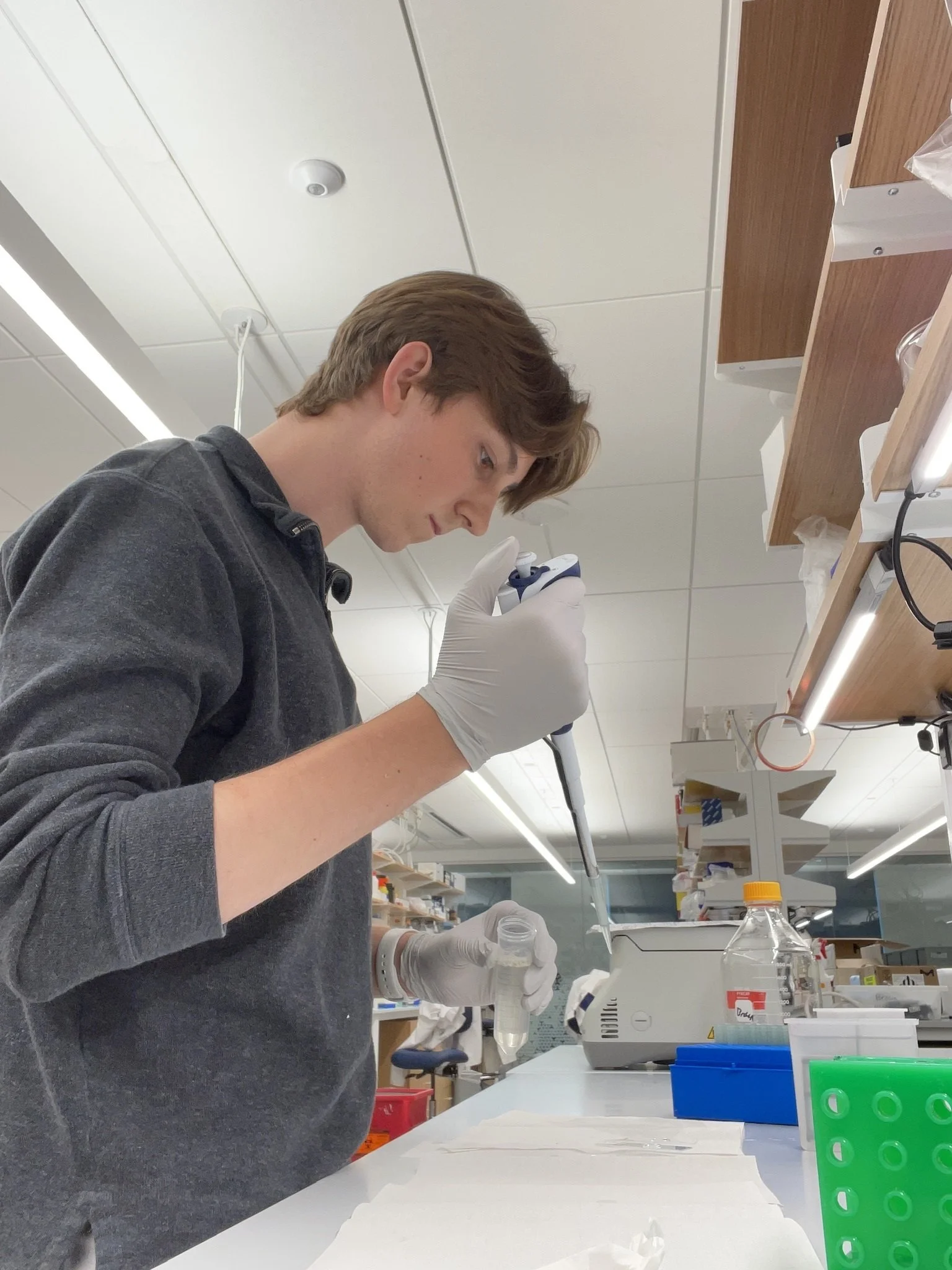Moments in TIME: Fellows Shaping the Future of Aging - Sean Simonini
In the field of aging biology, scientific breakthroughs often go hand-in-hand with public understanding and policy. That’s where Sean Simonini comes in. As a TIME Fellow, Sean has harnessed his passion for advocacy and turned it into tangible action, advancing policy and legislation to promote aging biology research and state-level funding for this crucial work.
Sean’s journey into aging biology began after the tragic loss of his aunt to ALS, which sparked his determination to contribute to finding answers for neurodegenerative diseases. With a background in policy and no previous training in biology, Sean joined the TIME Fellowship to combine his advocacy skills with scientific inquiry. Over the past year, he has launched the Beyond Our Years Campaign, organized local communities around aging research, starting a research project in lab and is now preparing to release the TIME Initiative’s first-ever podcast, TimeCast.
Here’s a closer look at his inspiring journey and the impact he hopes to make in the field.
Courtney: Tell us about your work as a TIME Fellow and what you’ve been focusing on.
Sean: In my role as a TIME Fellow I have been dedicated to advancing policy and legislation related to aging biology research, as well as working towards state-level funding for aging biology initiatives. Collectively, this effort has been known as the “Beyond Our Years Campaign.”
Courtney: Why is advocacy work so important to aging biology?
Sean: Aging biology, like any other up-and-coming field, faces challenges with how it is understood by and communicated to the public. Connecting directly with government entities and public officials to build trust and investment in the field helps us shape the future of aging biology to benefit as many people as possible. Furthermore, with a rapidly aging population here in the United States, developing interventions to help address cognitive decline and frailty - to increase healthspan - is essential to the sustainability of our healthcare system and our economy, as well as the wellness of us and our loved ones.
Courtney: What’s a recent milestone in your advocacy work that you’re proud of?
Sean: We have seen a number of successes over the past year, including getting to attend the Alliance for Longevity Initiative’s (A4LI) first Congressional Briefing and Fly-In for aging research down on Capitol Hill. Beyond attending events, I have been helping to build the Boston aging biology community by working to organize mixers in the area, and have had the opportunity to meet with biotechnology leaders here in Massachusetts and throughout New England, continuing to build support for the (soon to be announced) Massachusetts Aging Research Coalition.
Courtney: I know you have an announcement about another project you’ve been working on too that I’m excited for the world to hear.
Sean: Recently, we recorded our first ever episode of the “TimeCast” which will be the TIME Initiative’s podcast which will serve as a platform to highlight visionaries in the field of aging biology, while also uplifting the efforts of talented undergraduates and other trainees who are helping to form the future of this field. Be on the lookout for that first episode coming out soon!
Courtney: You are also combining advocacy with scientific research. How do you see your advocacy work contributing to the field of aging biology?
Sean: I hope my advocacy work will help ensure that future medicines, therapies, and all the other fruits of the aging biology field, are well understood by the public and - most importantly - can be accessible to as many people as possible as public goods and knowledge, not just reserved for certain groups. In addition, I hope any potential state funding we obtain for this work could help to further the support of talented undergraduates who are interested in getting into the aging biology field, particularly at our public universities.
Courtney: What inspired you to pursue a career in aging biology?
Sean: In 2022, after losing my aunt to ALS, I knew that I could not just sit on the sidelines of science and had to do my part to find an answer. In this process, I learned so much about how so many neurodegenerative diseases are underscored by common degradations in biological processes, which I would come to learn is a foundational principle of aging biology. Although I had no scientific skills at the time, I knew how to work in the policy arena and how to advance public-facing discussions about important topics. That led me to the TIME Initiative, where, as a Fellow I was able to leverage my legislative experience to help advance aging biology research. It was also through the TIME Initiative that I was encouraged to get into a lab and actually contribute to our understanding of these biological processes.
Courtney: What challenges did you face starting your journey in the field without a scientific background, and how did you overcome them?
Sean: As someone who hadn’t stepped foot into a laboratory prior to the Fellowship, understanding the science of aging biology was a major hurdle at first. I was (and still am) incredibly grateful to all of the other TIME Fellows, and Courtney, who were incredibly supportive in providing me resources, sharing papers with me, explaining difficult concepts, and ultimately helping me be a better advocate for the field, and now a researcher too.
Courtney: What did you learn at the retreat?
Sean: Getting to meet and have in depth discussions with leaders in the field, such as Alex Colville and Laura Demming, was eye-opening in helping me understand how special this moment in time is. Prior to the TIME Fellowship, there were very few, if any, supports for undergraduates (especially from small institutions like mine, with no aging biology labs), to get involved with the field. Even 10 to 20 years ago, the space was very different than it was now. The expansion of progress and investment in the legitimate science of aging biology is heartening and makes me confident about the future of the field, even though it is a relatively new thing that 25 undergraduates from across the world could be funded to meet up in northern California to talk about how they want to help people live healthier for longer.
Courtney: How has the TIME Fellowship community influenced your journey?
Sean: Before talking with the other TIME Fellows from the first cohort, I used to think aging biology was a field of science that was decades or centuries away from having a meaningful impact. Now, in meeting undergraduate researchers who are doing aging biology at this very moment, I recognize that we are on the cusp of multiple breakthroughs in this space that can meaningfully improve the quality of life for many individuals who are suffering from age related diseases.
Courtney: What advice would you give someone trying to build their network in aging research?
Sean: It’s a small world out here… for now, anyways. With how young aging biology research is, it seems like everyone knows everyone, so if you have a connection to one researcher or leader in the field, the odds are in your favor that they can make an introduction. If you don’t have any ties to the space, cold emails turn warm when you fill them with strong enthusiasm, something that everyone in this field welcomes. And of course, I would be remiss not to advise you to stay involved in the TIME Initiative slack channel, which has hundreds of aging biology researchers, advocates, organizers, and thinkers all in one space; they are all an incredible resource for opportunities, advice, collaboration, and so much more.
Courtney: What meaningful connections have you made during the TIME Fellowship?
Sean: Back during the retreat, I had met another TIME Fellow, Alvira Tyagi, who at the time was a Junior at Harvard working in the laboratory of Lee Rubin on GDF-11 and brain aging. She had told me all about her work (which was more than I could understand then), and I was fascinated. Little did I know that a year later (that is, today), I am now a Junior, working in the laboratory of Lee Rubin, working on brain aging! It’s a path I’d never thought I’d be on but that was just one example of how the TIME Fellowship has shaped my life for the better.



